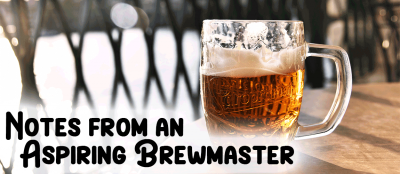Notes from an Aspiring Brewmaster - The Porter!
Author: Madhar al'Thera
Published: August 27 2021 Tar Valon Times Blog Link
The first beer style we’re going to examine is the porter. The porter is a dark, malt forward beer with a relatively low alcohol content of about 3.5-6%. Depending on the brew, you can expect to find notes of chocolate, coffee, caramel, nuts, and sometimes a smoky flavor with a dry finish. The porter’s history is as unclear as the beer itself so let’s take a look on where this beer came from and how it developed.
The first theory involves London’s Ralph Harwood in the early 1700s. In order to save money, Harwood would take leftover beer from other kegs and combine them to create a new beer and to avoid waste. At one point, one of these “beer cocktails” caught on with some of the working-class, especially porters, and Harwood tried to replicate it. It was originally brewed with brown malt roasted over a fire to provide the dark color and smoky flavor. The style started making its way around Europe and was picked up by a brewer in Ireland named Arthur Guinness (maybe you’ve heard the name?). Mr. Guinness brewed his porter from sometime in the 1770s until 1974. However, brown malt was expensive and as the beer grew in popularity brewers started to cut corners. They started using pale malt and adding things like opium and hemp to help darken the beer. Thankfully David Wheeler invented a new way to roast malt in 1817 that made it easier to roast the pale malts to a darker and more “well-done” version to make porters. His invention used a process similar to the way coffee beans are roasted and made it cheaper (and safer without extra add-ins) for brewers to make porters.
The other two theories are less exciting than the image of Ralph Harwood mixing concoctions in his brewery. One theory states that the beer was brought over from the Netherlands via trade with England and that the Dutch were drinking a beer called “porter” as early as the 14th century. Another one posits that porters we’re just stale brown ales that caught on by accident. Either way, it’s a beer that is now popular all around the world with different sub-categories, depending on the target audience and region.
So there we have it. While we don’t know the true origins of the beer, we do know that it’s a beer that has developed over time to be a full bodied, intricate brew. Whether you have the more hoppy American porter, the traditional London porter, or the higher alcohol, more boozy Baltic porter, you’ll be sure to enjoy this complex beer.
